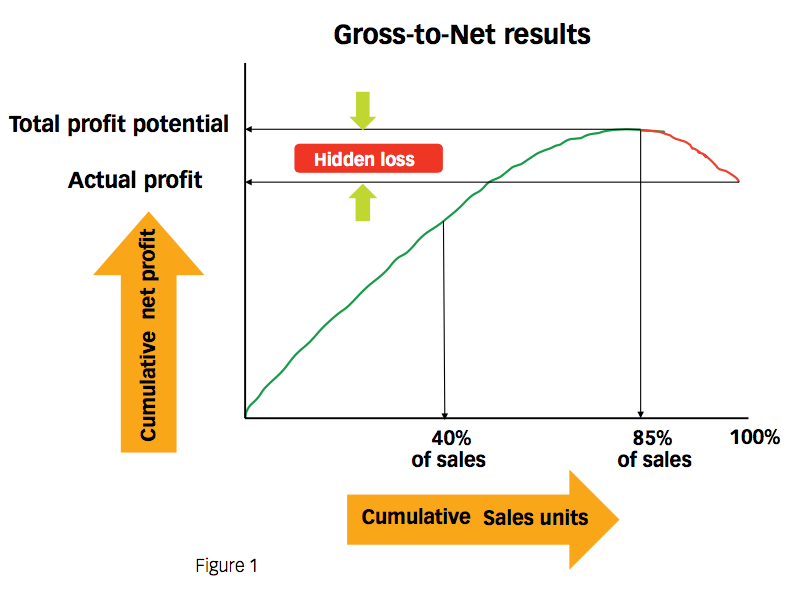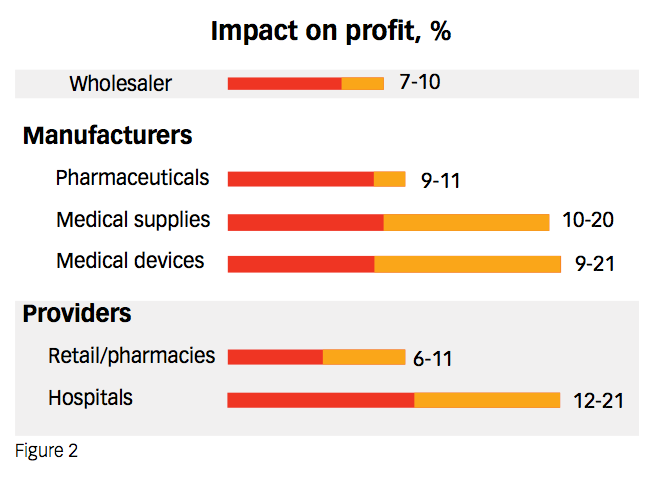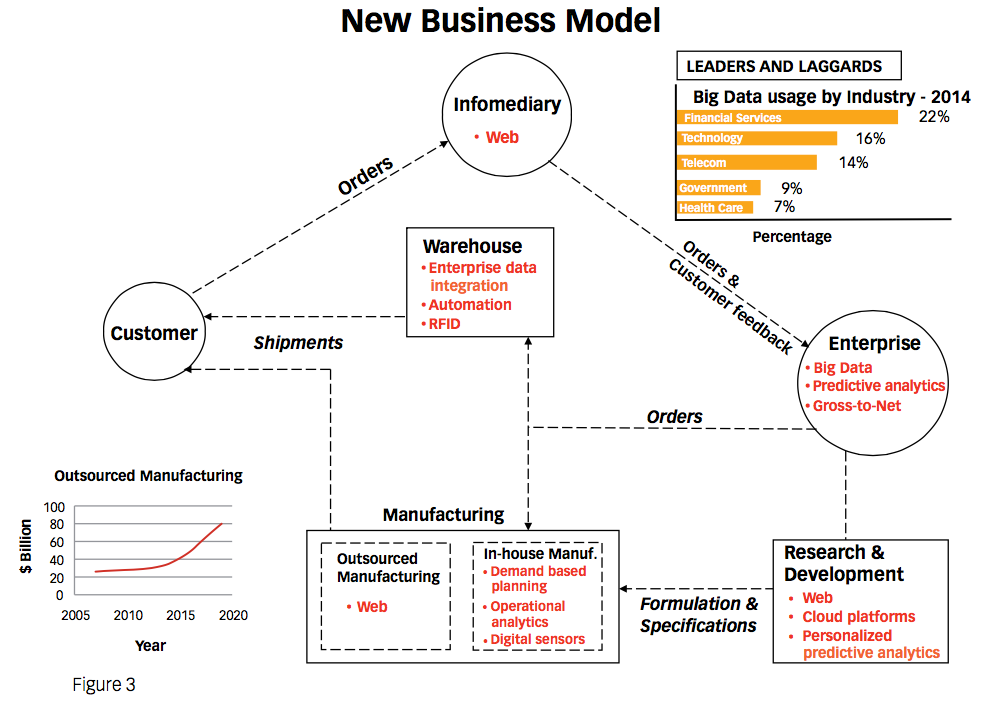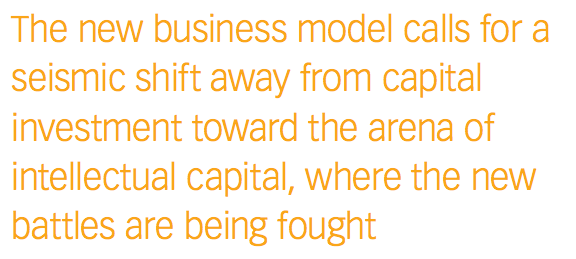Pharma dot-gov: A New Business Model
Pharmaceutical Executive
An advocate of business system automation in the global pharma supply chain offers a six-pronged approach to adapting to the realities of a new age of mounting regulation and customer expectations.
Regulatory intensity and its impact on pivotal economics (pricing, LOE, NDAs, etc.) has put the biopharma industry’s traditional business model under tremendous pressure. According to a recent Forbes/KPMG survey of CEOs, regulation is now the issue with the greatest impact on corporate success in the “new economy” marketplace.
Given these developments, the biopharmaceutical industry needs to ask itself: who are we and where are we going in this new era we call the Regulatory Age? This article examines the dynamics shaping the future of the global biopharma enterprise and presents a new, emerging business model from which executives can learn how to compete and succeed. Six actions that companies can take to manage this transition successfully are also outlined. Underscoring the analysis is a simple message: Those that choose to “wait and see” will not survive.
New-economy model
A few years ago, the industry’s business model was a typical old-economy supply chain framework in which products moved from R&D to manufacturing, distribution, sales, and on to the customer. Pharma companies still consider physicians and other intermediaries in the value chain, such as distributors, wholesalers, and drugstores, to be their customers.
That old business model has been attacked at every link in the supply chain by the new demands imposed on companies in the Regulatory Age. Reforms have moved from saving costs to initiatives focused on improving health outcomes and

sustainability. They have redefined the customer to be payers and patients, who with health information have been empowered to make real, value-based decisions on their health outcomes. Retail pharmacies’ profit margins are eroding as they sell less product to uninsured and/or underinsured patients. Pharmacies require bigger discounts from wholesalers to remain competitive.
All of this flows upstream to manufacturers, who have their own problems with new fees and higher rebates. In addition to draining margin from the value chain, there is the cost of compliance, which generally creates a drag on business by slowing down processes. The sea change flowing from the regulatory environment is so impactful that companies must change the business model to survive.
Partners in dynamic trade
Let’s start with the real customer. The pharmaceutical industry is flooded with customer data made available by emerging digital technologies and generated directly by consumers, giving manufacturers valuable insight into how patients are using their products. This information can help companies provide payers the real-world evidence they demand as part of an outcomes-focused healthcare system.
These shifts are attracting many non-traditional players to the value chain including online pharmacies and e-health and mobile health firms that allow buyers to skip over traditional sales and distribution links and to provide a direct conduit between pharma companies and patients. That emerging link in the supply chain puts patients in touch with drugmakers in an easier, faster, and often cheaper fashion. It is here to stay.
In addition to products, “infomediaries” provide information about drugs, doctors, hospitals, counseling, and other services-one-stop shopping at its best. How does pharma make use of this valuable information? Unfortunately, not very well. Approximately 48% of all US companies are using big-data technologies to unlock customer behavior data. Pharma lags significantly behind, with only 7% of companies using big-data technologies.
Increasingly, the regulatory approach is putting pressure directly on manufacturing, with a huge emphasis on quality and drug safety. Compliance requires analyzing vast amounts of digital data and is driving a need for agility in manufacturing. This means more than just being fast when there’s an emergency; it means building and establishing a business model that can better respond to demand shifts and customer wishes-at the same or even reduced cost.
Building an agile supply chain model requires stability in production, replenishment, and visibility. Adopting demand-based supply systems coupled with big data computation capabilities will enable companies to quickly establish the link between finished product and all the input materials and processes, whether they be in-house facilities or outsourced partners. The pharma industry finally has the tools to create virtual enterprises that span the entire supply web. “Not-at-all” manufacturing has replaced “just-in-time” manufacturing, as the CMO emerges as a “strategic partner” versus the old school business model of “vendor-customer.”
Similar changes are afoot in R&D. The new business model goal of R&D is collaborative activity, not secretive, to enhance the linkages among all stakeholders in research, development, commercialization, and delivery to focus on personalized drugs and disease preventions. Increasingly, savvy executives avoid building expensive, time-consuming, in-house capabilities. Instead, they form partnerships that coalesce and dissolve with each new project-a process of dynamic trade.
The missing dimension
In the old economy supply chain framework, it was good enough to manage top-line revenue and cost for profitability. Not true today. In recent years, top pharmaceutical companies increased sales an average of 4-5% per annum; however, margins dropped by a similar amount. Net margin erosion continues with regulatory change; for example, a recent Credit Suisse study found that extension of “price protection” in Medicare Part D drove the average gross-to-net (GTN) margin ratio down approximately seven points during 2008-2012.
Real customer profitability can stay hidden deep within the business, masked by regulatory obligations such as best pricing, power purchase agreement (PPA), mandatory rebates, cost to serve, cost to comply, and manufacturing fees. Watchful executives realize that, to manage their supply chain, they need tools that empower them to surface and line up all the costs of business. This is not about wrapping

metrics around the supply chain to tell executives where they’ve been, but rather predictive systems to foretell where they are going.
Pharmaceutical companies are, unfortunately, saddled with legacy systems containing heterogeneous and disparate data. They are struggling and failing to manage the GTN process using Excel spreadsheets and disintegrated data. This area is ripe for automation. GTN done right produces results such as those illustrated in Figure 1, which captures the attributes of customers concerning behaviors that drive costs into the business. Notice that the accretive profit begins to decline when costs, such as PPA, best pricing, marginalizing rebates, and cost to serve, are triggered. Uncovering, simulating, and predicting true net margins provide the knowledge that completes the missing dimension in the new business model.
Potential payoff
The smart money will be on the new business model. The payoff looks good, with supply chains now accounting for nearly 25%, or $230 billion, of pharma costs.

Even minor efficiency gains could free up billions of dollars. Opportunities from the transformation can be found across the whole supply chain, with profit improvement ranging from about 6% for retailers to 20% for hospitals, according to a recent study, “Strengthening Healthcare’s Supply Chain,” by McKinsey (see Figure 2).
Looking ahead
What will be the result of these disruptive dynamics at work in the biopharma industry? First, companies must learn how to do business with the real customer, in order to build an outcomes-based business model where the traditional product, a drug, is only one part of pharma’s value proposition. As services become

increasingly important, infomediaries will be a permanent addition to the value chain, and a conduit to the real customer (see Figure 3). Pharma companies must integrate them into the supply chain because those organizations will be a key source of valuable customer data, which is expected to grow at a compounded annual rate of 41% through 2020.
Second, the new business model recognizes that the line distinguishing in-house from outsourced manufacturing, R&D, and SG&A has blurred. In the new model, dynamic trade will prevail as companies of different strengths and capabilities partner to produce health-based outcomes. Some experts imagine that many enterprises will become tripartite virtual partnerships: one arm will handle R&D, another will take on manufacturing, and the infomediaries will handle sales and marketing. The one certainty? Agility will rule the day.
Last is the missing dimension: GTN. Biopharma executives must know where their book of business is taking them before they write it. Surprises are dangerous and regrettably, companies have tremendous risk exposure in this area when struggling to manage the GTN process manually.
Quite simply, pharma companies must restructure their thinking to survive. Ultimately, the new business model calls for a seismic shift away from capital investment toward the arena of intellectual capital, where the new battles are being fought.
Meeting the challenge
Here are six keys that experience shows are critical to linking all partners in this virtual value chain.
1. Raise executive awareness - don’t “wait and see”
Today is the Regulatory Age-it’s here to stay and it’s driving a new business model that requires executives to do things beyond their current comfort zone. Executives must open their eyes to building a new business model by:
- Exploiting social media and Millennial generation tools.
- Developing partnerships with players from other industries.
- Rethinking, and in some cases discarding, supply chain processes that are delivering good margins and solid growth in their current configuration in order to survive in the long term.
- Developing an enterprise-wide data strategy, big data, and traditional data that caters to and supports the dynamic supply web of trading partners.
- Expecting incremental results by starting slow, realizing benefits, pausing, taking the next step, and reaping subsequent benefits.
2. Shift to a health outcomes based supply chain
Companies must put their old economy supply chain framework-one that focused largely on cost-to the side, and take a zero-based approach to building a health outcomes-based supply chain. That is to say, linkages (internal and external) should be examined for the perceived value they deliver to health outcomes, be it enhancing efficiency, increasing safety, reducing cost, providing health information, supporting diagnosis and monitoring, or driving compliance in medication. If they don’t contribute, then eliminate them, change them, or rethink them.
3. Embrace the infomediary
Pharma companies need to either partner with “infomediaries” or start grassroots development efforts with them right away. The Internet is a marketplace with low

barriers to entry-but only for those that get there first. Once an infomediary gathers a mass of buyers, the sellers arrive with products to attract more buyers. It’s a fast-moving cycle that quickly builds a few dominant players, and smart companies won’t want to be shut out. Remember, infomediaries are more than just online pharmacies, and they are here to stay.
4. Get wired
Technology is the major enabler to a health outcomes business model; unfortunately, pharma has long lagged behind other industries in leveraging efficiencies from data and technology. Here are the major enabling technologies that pharma must embrace going forward:
- Big data leveraged with predictive analytics are crucial to understanding your customer, company, and industry.
- Scalable and flexible integration, including cloud architecture and cloud platforms coupled with Web speed, is vital to collaboration and transparency among dynamic trading partners.
- Demand-based supply systems that segment the supply chain according to the characteristics of products and customers will open the path to agile manufacturing by aligning the production cycle with patterns of patient demand and increasing the low frequency of their manufacturing processes. It’s all about replenishment and packaging times.
- Digital sensors and devices represent immense opportunities to gather data used to empower R&D, analyze drug efficacy, and to improve manufacturing agility.
5. Automate gross-to-net - now!
Put simply, there’s too much at stake to manage such a complex and vital process manually. GTN automation allows management to highlight the costs of poorly designed internal and external linkages in their supply chain accurately, timely, and as a competitive weapon for the enterprise.
6. There is neither time-nor money-to do everything in-house
The Web’s instant communication power, along with big data technologies and new operational analytics software, makes it possible to draw the full economic benefit from outsource operations and services-from manufacturing to SG&A.
Companies must learn to collaborate in areas where they have solid footing; agree on benefit sharing models; select partners for potential value collaboration; dedicate resources to the collaboration; involve senior leadership; and start with that long-term perspective.
Richard Burcham is President of BPI Technologies. He can be reached at rburcham@bpitechnologies.com

The Misinformation Maze: Navigating Public Health in the Digital Age
March 11th 2025Jennifer Butler, chief commercial officer of Pleio, discusses misinformation's threat to public health, where patients are turning for trustworthy health information, the industry's pivot to peer-to-patient strategies to educate patients, and more.
Navigating Distrust: Pharma in the Age of Social Media
February 18th 2025Ian Baer, Founder and CEO of Sooth, discusses how the growing distrust in social media will impact industry marketing strategies and the relationships between pharmaceutical companies and the patients they aim to serve. He also explains dark social, how to combat misinformation, closing the trust gap, and more.
Applying Porter’s Five Forces to Portfolio Management in Pharmaceutical R&D: A Strategic Roadmap
March 17th 2025The increasing costs and complexity of R&D in the pharmaceutical industry have necessitated the adoption of strategic portfolio management to optimize resource allocation and enhance competitive advantage.